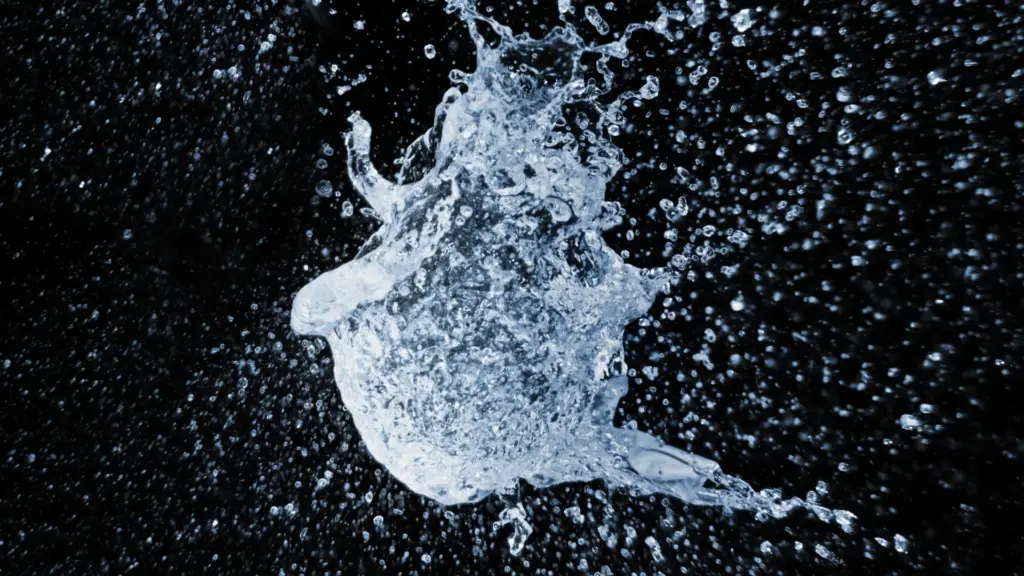
In a groundbreaking discovery, scientists have successfully captured the elusive “premelting state” of water, a phenomenon where water appears to be both solid and liquid simultaneously. This rare state of confined water has long puzzled researchers due to its defiance of traditional liquid or solid classifications. The breakthrough was achieved by a team from the Department of Chemistry at Tokyo University of Science, Japan, led by Professor Makoto Tadokoro, Lecturer Fumiya Kobayashi, and first-year PhD student Mr. Tomoya Namiki. Their findings were published in the Journal of the American Chemical Society on August 27, 2025.
The research team employed static solid-state deuterium nuclear magnetic resonance (NMR) spectroscopy to delve into the hierarchical dynamics of water confined within the hydrophilic nanopores of a molecular crystal. This innovative approach allowed them to characterize the premelting state, a newly observed phase of water, providing unprecedented insights into its unique behavior.
Unraveling the Premelting State
To conduct their experiments, the scientists produced hexagonal rod-like crystals with quasi-one-dimensional channels containing nanopores approximately 1.6 nm in diameter. These channels were filled with heavy water (D2O). By analyzing the NMR spectra of a single crystal of {[Co(D2bim)3](TMA).20D2O}n at room temperature, the team identified a hierarchical, three-layered structure within the confined water molecules. The distinct peaks in the spectra corresponded to each layer’s unique movements and hydrogen-bonding interactions, revealing a multi-layered organization.
Interestingly, the water confined in these nanopores freezes in a structure distinct from bulk ice. It first melts through a distorted hydrogen-bonded structure, leading to the formation of the premelting state. This state is characterized by the coexistence of frozen H2O layers and slowly moving H2O, as explained by Prof. Tadokoro.
“The premelting state involves the melting of incompletely hydrogen-bonded H2O before the completely frozen ice structure starts melting during the heating process. It essentially constitutes a novel phase of water,” stated Prof. Tadokoro.
Implications and Future Applications
The researchers further measured the spin-lattice relaxation time to quantify the rotational mobility of the heavy water molecules in this new phase. While the activation energy for the premelting state was significantly different from that of bulk ice, the correlation time was remarkably similar to that of bulk liquid water. This indicates that although the water molecules’ positions were relatively fixed, their rotational motions were fast and liquid-like.
This discovery enhances our understanding of water’s behavior under extreme confinement, shedding light on crucial structural and dynamic aspects. Such insights are vital for comprehending how water and ions permeate through biological proteins and membranes. Looking to the future, these findings could lead to practical innovations.
“By creating new ice network structures, it may be possible to store energetic gases such as hydrogen and methane and develop water-based materials such as artificial gas hydrates,” suggested Prof. Tadokoro. “Controlling the freezing properties of water based on the structure of ice could lead to the creation of new, inexpensive, and safe hydrosphere materials.”
Broader Impact and Support
This study underscores that even a common substance like water still holds fundamental secrets waiting to be unlocked. The research was supported by JSPS KAKENHI Grant-in-Aid for Scientific Research (B) JP23K26672 and JSPS KAKENHI Grant-in-Aid for Early-Career Scientists JP23K13767 from the Ministry of Education, Culture, Sports, Science, and Technology, Japan.
As scientists continue to explore the mysteries of water, the implications of these findings could extend beyond academia, potentially influencing various industries and leading to new technological advancements. The discovery of the premelting state not only contributes to our fundamental understanding of water but also opens up new avenues for research and innovation.







